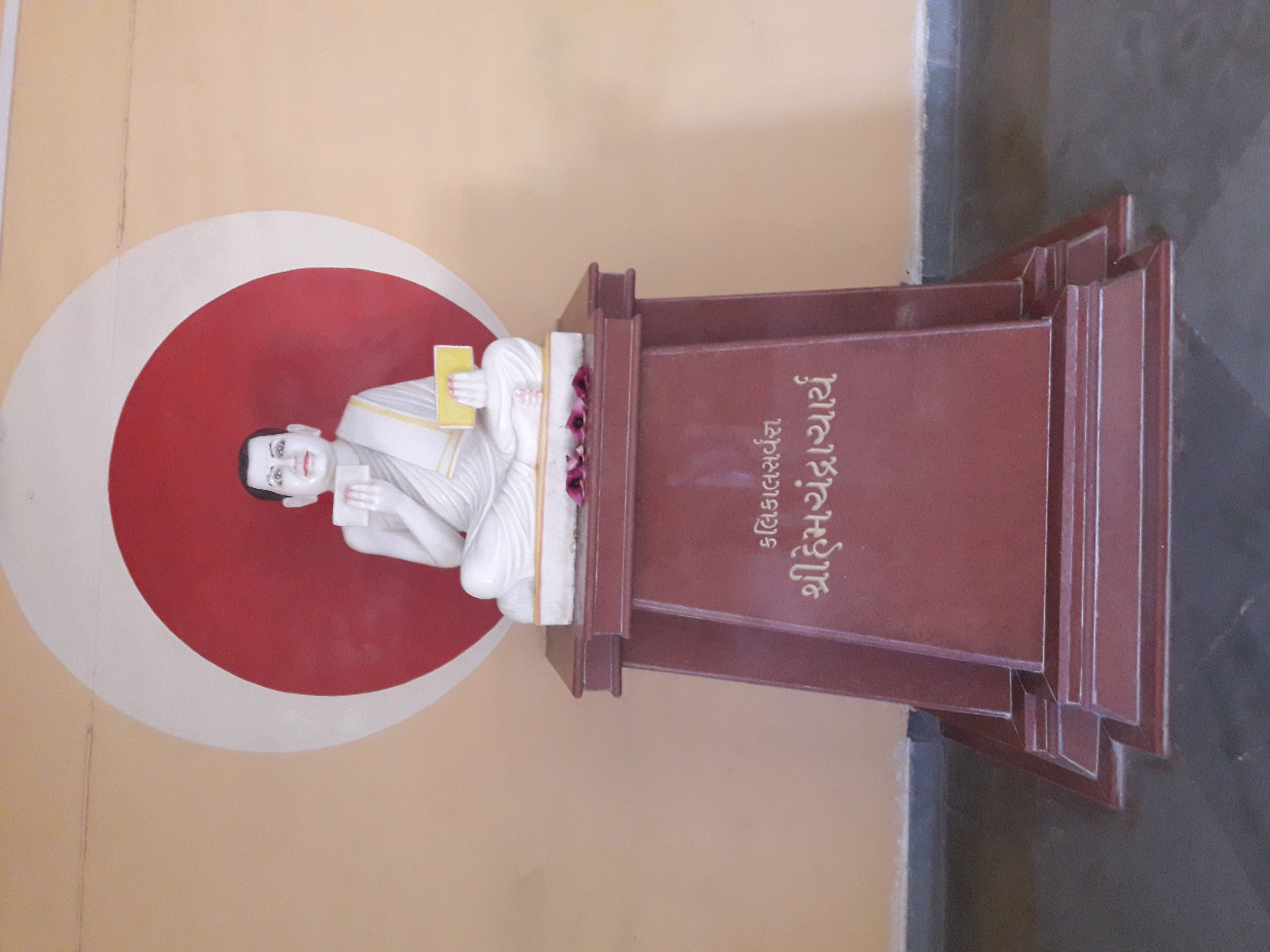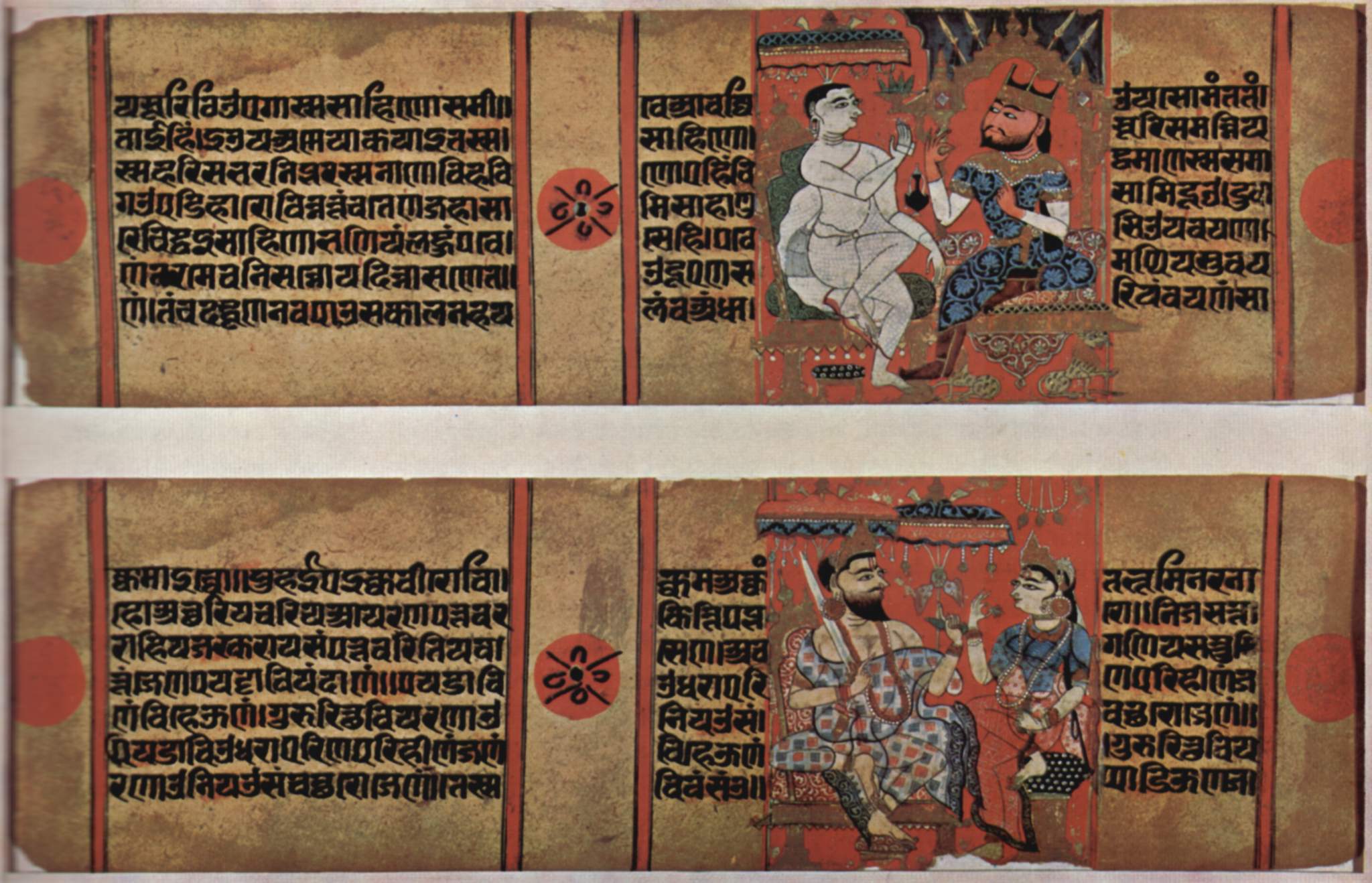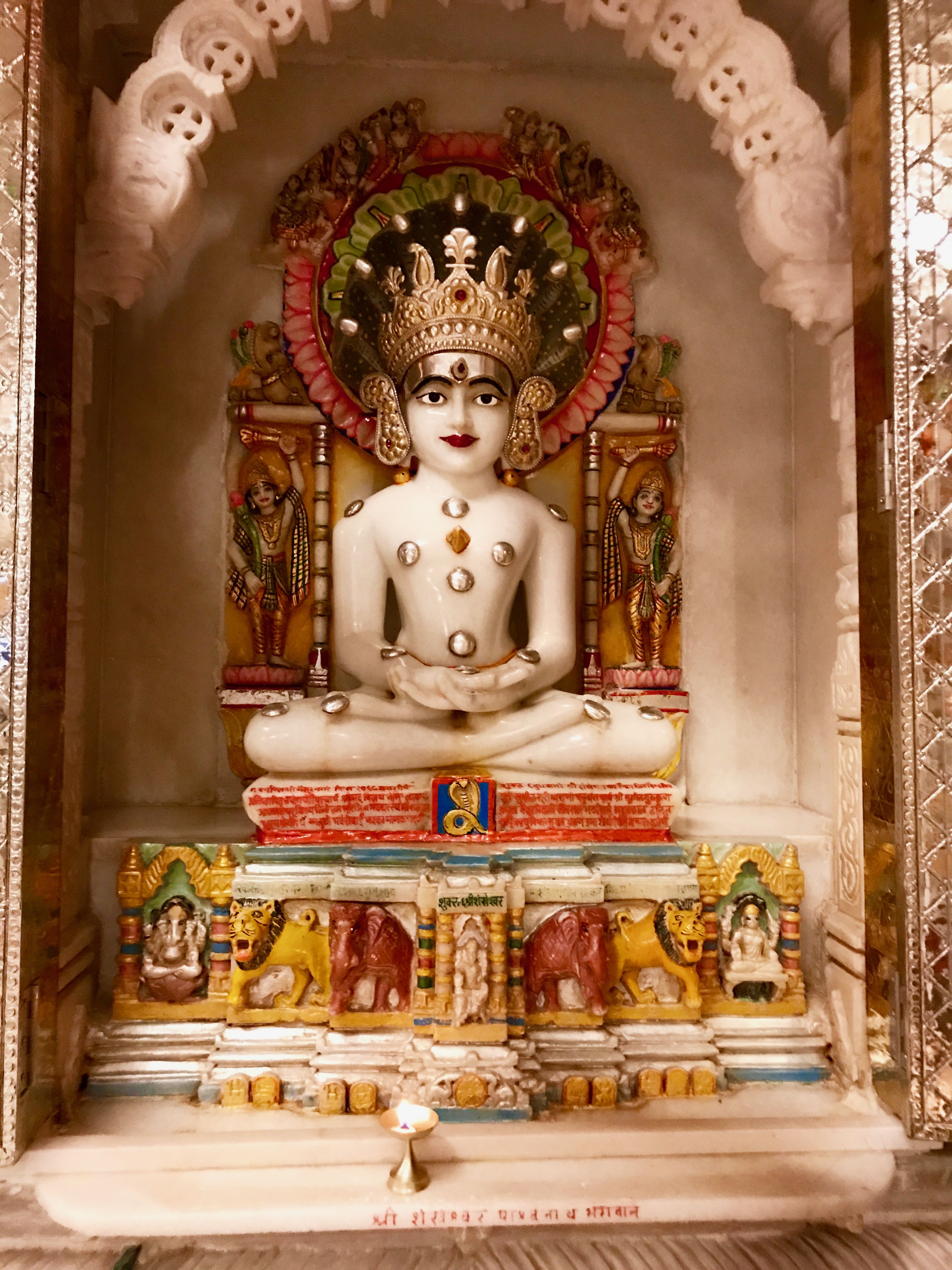|
Jain Councils
There are several Jain councils mentioned in Jain texts associated with revision and redaction of Jain Agamas (sacred texts). The first council was held at Pataliputra. The second councils were probably held simultaneously at Mathura and Vallabhi. The third council was held at Vallabhi under auspices of Devarddhigani ''Kshamashramana'' when the texts were written down. The definite dates of councils are not mentioned in the texts before Jinaprabhamuni's ''Sandehavisausadhi'' of 1307 CE. The later texts states that the last Vallabhi council was held 980 or 993 years after the death (''Nirvana'') of last Tirthankara Mahavira (After Vardhamana = AV). Councils Pataliputra Council The first council was held at Pataliputra (now Patna, Bihar, India) in 300 BC, under the patronage of Mauryan king Chandragupta. The ''Avashyaka-churni'' (dated between Samvat 650 and 750=593–693 CE) describes: There was twelve years long famine which resulted in the monks moving to the coast. When t ... [...More Info...] [...Related Items...] OR: [Wikipedia] [Google] [Baidu] |
Hemchandra
Hemacandra was a 12th century () Śvetāmbara Jaina ācārya, scholar, poet, mathematician, philosopher, yogi, grammarian, law theorist, historian, lexicographer, rhetorician, logician, and prosodist. Noted as a prodigy by his contemporaries, he gained the title ''kalikālasarvajña'', "the knower of all knowledge in his times" and is also regarded as father of the Gujarati language. Born as Caṅgadeva, he was ordained in the Śvetāmbara school of Jainism in 1110 and took the name Somacandra. In 1125 he became an adviser to King Kumārapāla and wrote ''Arhannīti'', a work on politics from Jaina perspective. He also produced ''Triśaṣṭi-śalākā-puruṣacarita'' (“Deeds of the 63 Illustrious Men”), a Sanskrit epic poem on the history of important figures of Jainism. Later when he was consecrated as ācārya, his name was changed to Hemacandra. Early life Hemacandra was born in Dhandhuka, in present-day Gujarat, on Kartika Sud Purnima (the full moon day of K� ... [...More Info...] [...Related Items...] OR: [Wikipedia] [Google] [Baidu] |
Haribhadra
Acharya Haribhadra Suri was a Śvetāmbara mendicant Jain leader, philosopher , doxographer, and author. There are multiple contradictory dates assigned to his birth. According to tradition, he lived c. 459–529 CE. However, in 1919, a Jain monk named Jinvijay pointed out that given his familiarity with Dharmakirti, a more likely choice would be sometime after 650. In his writings, Haribhadra identifies himself as a student of Jinabhadra and Jinadatta of the Vidyadhara Kula. There are several, somewhat contradictory, accounts of his life. He wrote several books on Yoga, such as the Yogadṛṣṭisamuccaya and on comparative religion, outlining and analyzing the theories of Hindus, Buddhists and Jains. Life The earliest story of his life say that Haribhadra was born in Dharmapuri and that he was an educated Brahmin who decided that he would become a pupil of anyone who could state a sentence which Haribhadra could not understand. After hearing a Jain nun named Yākinī Mah ... [...More Info...] [...Related Items...] OR: [Wikipedia] [Google] [Baidu] |
Jambuvijaya
Jambuvijaya (1923–2009), also known as Muni Jambuvijayji Maharajsaheb, was a monk belonging to the Tapa Gaccha order of Śvetāmbara sect of Jainism. He was known for his pioneering work in research, cataloguing and translations of ''Jain Agamas'' and ancient texts. He was responsible for discovering and publishing many ancient Jains texts lying in different forgotten Jain ''jnana bhandaras'' (ancient Jain libraries). He was a disciple of Muni Punyavijay. Both Muni Punyavijay and Jambuvijay worked all their life in the compilation and publication of ancient Jain Agama literature and cataloguing ancient Jain jnana bhandaras. Muni Jambuvijay was a scholar who devoted his entire life to critically editing Jain scriptures. Early life and family Jambuvijaya was born as Chunilal Bhogilal Joitram in 1923 in town of Mandal, Gujarat. His father's name was Bhogilal Mohanlal Joitram (1895–1959) and his mother's name was Aniben Popatlal (1894–1995). He was born in a deeply religious ... [...More Info...] [...Related Items...] OR: [Wikipedia] [Google] [Baidu] |
Vikram Samvat
Vikram Samvat (ISO: ''Vikrama Saṁvata''; abbreviated VS), also known as the Vikrami calendar is a Hindu calendar historically used in the Indian subcontinent and still also used in several Indian states and Nepal. It is a lunisolar calendar, using twelve to thirteen lunar months each solar sidereal years. The year count of the Vikram Samvat calendar is usually 57 years ahead of the Gregorian calendar, except during January to April, when it is ahead by 56 years. Vikram Samvat is an official calendar of Nepal. And unlike India where it is used only for religious dates, the solar version of Vikram Samvat is an official calendar used for everything from school sessions to legal contracts to any official functions. History A number of ancient and medieval inscriptions used the Vikram Samvat. Although it was reportedly named after the legendary king Vikramaditya, the term "Vikrama Samvat" does not appear in the historical record before the 9th century; the same calendar sy ... [...More Info...] [...Related Items...] OR: [Wikipedia] [Google] [Baidu] |
Vallabhi Council - Sculptural Depiction
Vallabhi (or Valabhi or Valabhipur) is an ancient city located in the Saurashtra peninsula of Gujarat, near Bhavnagar in western India. It is also known as Vallabhipura and was the capital of the Kingdom of Valabhi, an early medieval state ruled by the Suryavanshi Maitraka Dynasty. History Vallabhi was occupied as early as the Harappan period, and was later part of the Maurya Empire from about 322 BCE until 185 BCE. The Satavahana dynasty ruled the area, off and on, from the late second century BCE until the early third century CE. The Gupta Empire held the area from approximately 319 CE to 467 CE. The Great Council of Vallabhi, was held under Devardhigani Kshamashraman's guidance to preserve the remaining canonical texts of Jainism. there in 454 CE, during the decline of the Gupta Empire. In the fifth century (CE), the first two Maitraka rulers, Bhatarka and Dharasena I, only used the title of ''Senapati'' (general). The third ruler, Dronasimha (Dronasena ), declare ... [...More Info...] [...Related Items...] OR: [Wikipedia] [Google] [Baidu] |
Motilal Banarsidass
Motilal Banarsidass Publishing House (MLBD) is an Indian academic publishing house, founded in Delhi, India in 1903. It publishes and distributes serials, monographs, and scholarly publications on Asian religions, Buddhology, Indology, Eastern philosophy, history, culture, arts, architecture, archaeology, language, literature, linguistics, musicology, mysticism, yoga, tantra, occult, medicine, astronomy, and astrology. Amongst its publications are the 100 volumes of the Mahapuranas; the 50 volumes of the '' Sacred Books of the East'', edited by Max Müller; ''Bibliotheca Buddhica'' (30 volumes in 32 pts); Ramcharitmanas with Hindi and English translations; the Manusmriti in 10 volumes and the Sanskrit lexicon; and the 7 volumes of ''Encyclopedia of Indian Philosophies''. It also brings out books based on research and study conducted at organizations such as the Indian Council of Historical Research (ICHR), Indira Gandhi National Centre for the Arts (IGNCA), and Indian Cou ... [...More Info...] [...Related Items...] OR: [Wikipedia] [Google] [Baidu] |
Maitraka
The Maitraka dynasty ruled the Kingdom of Valabhi in western India from approximately 475 to 776 from their capital at Vallabhi. With the sole exception of Dharapaṭṭa (the fifth king in the dynasty), who is associated with sun-worship, they were followers of Shaivism. Their origin is uncertain but they were probably Chandravanshi Kshatriyas. Following the decline of the Gupta Empire, Maitraka dynasty was founded by ''Senapati'' (general) Bhaṭārka, who was a military governor of Saurashtra under Gupta Empire, who had established himself as the independent around 475 CE. The first two Maitraka rulers Bhaṭārka and Dharasena I used only the title of ''Senapati'' (general). The third ruler Droṇasiṁha declared himself as the ''Maharaja''. During the reign Dhruvasena I, Jain council at Vallabhi was probably held. The next ruler Dharapaṭṭa is the only ruler considered as a sun-worshipper. King Guhasena stopped using the term ''Paramabhattaraka Padanudhyata'' along ... [...More Info...] [...Related Items...] OR: [Wikipedia] [Google] [Baidu] |
Jain Monk
Jain monasticism refers to the order of monks and nuns in the Jain community and can be divided into two major denominations: the ''Digambara'' and the '' Śvētāmbara''. The monastic practices of the two major sects vary greatly, but the major principles of both are identical. Five ''mahāvratas'' (Great Vows), from Mahavira's teachings, are followed by all Jain ascetics of both the sects. Historians believe that a united Jain ''sangha'' (community) existed before 367 BCE, about 160 years after the ''moksha'' (liberation) of Mahavira. The community then gradually divided into the major denominations. However, no evidences indicate when the schism between the Digambaras and the Śvetāmbaras happened. Terminology ''Digambaras'' use the word ' for male monastics and '' aryika'' for female monastics. '' Svetambara monks'' are also called ''nirgrantha'' (without bonds). '' Śvētāmbaras'' also use the word ' for male monastics but use the term ''sadhvis'' for female monast ... [...More Info...] [...Related Items...] OR: [Wikipedia] [Google] [Baidu] |
Śvetāmbara
The Śvetāmbara (; also spelled Shwetambara, Shvetambara, Svetambara or Swetambara) is one of the two main branches of Jainism, the other being the Digambara. ''Śvetāmbara'' in Sanskrit means "white-clad", and refers to its ascetics' practice of wearing white clothes, which sets it apart from the ''Digambara'' or "sky-clad" Jains whose ascetic practitioners go nude. Śvetāmbaras do not believe that ascetics must practice nudity. The Śvetāmbara and Digambara traditions have had historical differences ranging from their dress code, their temples and iconography, attitude towards Jain nuns, their legends and the texts they consider as important. Śvetāmbara Jain communities are currently found mainly in Gujarat, Rajasthan and coastal regions of Maharashtra. According to Jeffery D. Long, a scholar of Hindu and Jain studies, about four-fifths of all Jains in India are Śvetāmbaras. History and lineage Śvetāmbaras consider themselves to be the original followers of Maha ... [...More Info...] [...Related Items...] OR: [Wikipedia] [Google] [Baidu] |
Gujarat
Gujarat () is a States of India, state along the Western India, western coast of India. Its coastline of about is the longest in the country, most of which lies on the Kathiawar peninsula. Gujarat is the List of states and union territories of India by area, fifth-largest Indian state by area, covering some ; and the List of states and union territories of India by population, ninth-most populous state, with a population of 60.4 million in 2011. It is bordered by Rajasthan to the northeast, Dadra and Nagar Haveli and Daman and Diu to the south, Maharashtra to the southeast, Madhya Pradesh to the east, and the Arabian Sea and the Pakistani province of Sindh to the west. Gujarat's capital city is Gandhinagar, while its largest city is Ahmedabad. The Gujarati people, Gujaratis are indigenous to the state and their language, Gujarati language, Gujarati, is the state's official language. The state List of Indus Valley civilisation sites#List of Indus Valley sites discovered, ... [...More Info...] [...Related Items...] OR: [Wikipedia] [Google] [Baidu] |









